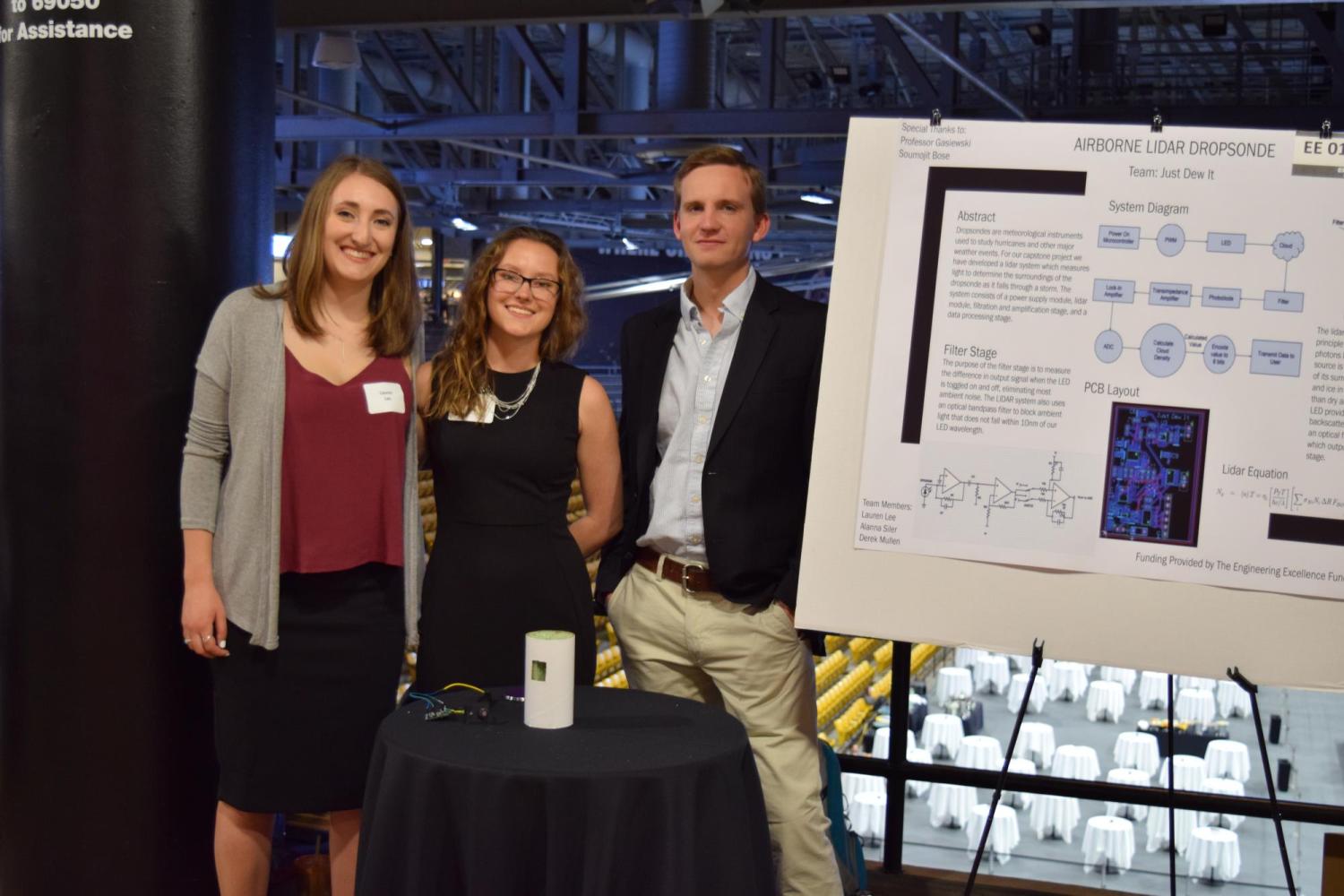Just Dew It

Team Members: Mackinley Kath, Derek Mullen, Alanna Siler, Lauren Lee
Project Sponsor: Professor Al Gasiewski
Currently the CET lab has an airborne system that drops into a hurricane and sends useful data back to be analyzed. The issue is that there is no way to tell when the system is in a cloud. We need to know when it is in a cloud because that is where the most important data comes from. Information gathered outside of the clouds is of little use.
A solution is a very small sensor and LED integrated into the preexisting dropsonde system. The LED will flash with high luminosity and if the lidar is actually in a cloud, the LED will reflect off of the the water particles and the sensor will detect the reflection. The system will then receive an alert as to whether the data is viable or not. Based on the amount of reflected light, the lidar system will be able to determine if it is inside a cloud.
The lidar system will most directly benefit the meteorological community and their study of large and developing storms. The lidar will transmit data on the cloud formations as it falls through, giving meteorologists a better understand of the structure of the storms they are studying. This will then indirectly benefit the communities that could be impacted by these storms, as they will be provided with more information and will be able to prepare accordingly.
The current system has no way to detect if it is in a cloud. Analysts can give an educated guess that they’re in cloud if the humidity reading is over 100%. However, there is no part of this system that is designed to detect a cloud. With our sensor, they will be able to know what sections of the data are most relevant and therefore make a better prediction on the incoming storm.

